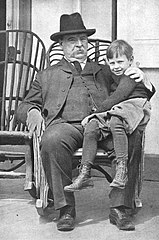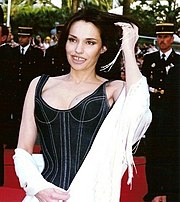Design
Design
Personality
Chart Properties
Your Cross represents the specific theme of your life. This cross embodies your unique potential & the lessons you're here to learn, providing a roadmap to fulfilling your life purpose.
We use the UTC birth time and date to do the calculations required to generate your Human Design chart.
Buy Tokens
Pay as you use, no expiry and no subscription required.Prompt Ideas
Get inspired with some epic prompt ideas.Steve Jobs's Biography
Steve Jobs Human Design Chart. Steve is an American entrepreneur, one of the originators of the computer revolution, co-founder of Apple Computer Corporation and Pixar Animation Studios.
Adopted as an infant, Jobs was into electronics by the time he was 10. As a teenager, he got himself hired at Hewlett-Packard, a Silicon Valley computer giant. He dropped out of college and landed a job at Atari, a maker of video games. Called to pursue a spiritual quest, he left the corporate scene and traveled to India. Upon his return to the US, he went back to Atari but not for long. In 1976, Jobs and his pal Steve Wozniak made a circuit board in their garage that they called The Apple. At Steve’s urging, Woz designed a computer that was small enough and useful enough for businesses and consumers alike. Woz, the engineering genius, and Jobs, the charismatic visionary, successfully parlayed their perfect combination of skills and talents into a business. By the time he was 24, Job’s Apple Corporation was worth $10 million. A year later, its value had grown to $100 million. Its graphical user interface, business applications and word processing won kudos, and millions cheered while Apple took on IBM and its personal computer.
As the Apple empire grew, Steve became a tyrant, subject to moody outbursts and gloomy silences. Hard feelings arose and power struggles with other executives ensued. Jobs resigned on 17 September 1985. The following year, 1986, he co-founded NeXt in an attempt to do for the hardware industry what he had down for software. With ever-broadening vision, he also bought a company which he renamed Pixar Animation Studios. He negotiated a deal with Disney to distribute Pixar’s films and became a Disney partner. Under Jobs’ leadership, Pixar won 20 Academy awards for such successful animated feature films as “Toy Story,” “A Bug’s Life” and “Finding Nemo.” In January 2006 Disney entered into an acquisition agreement with Pixar, leaving Jobs with a very large share of Disney stock and a seat on the Board of Directors.
With a twist of fate and a show of will, he convinced Apple to buy NeXt and was invited back to Apple in 1997 as interim CEO. In 2000, he was made permanent CEO. Under Jobs’ leadership Apple computer became a player in the computer industry once more. Jobs’ team created visually aesthetic computers in bright colors that appealed to younger buyers. The company’s venture into the entertainment industry fueled the growing coffers. In 2001 the company introduced the iPod and ITunes, enabling millions to listen to their favorite music on command. In September 2006 he unveiled his plans to use a similar model to enable consumers to download movies on their computers.
Jobs’ successes provided endless fascination for students of business and product innovation. On 20 June 1999, a made-for-TV movie related the story of Jobs, Woz and Bill Gates, “The Pirates of Silicon Valley.”
Jobs has four children: a daughter from his ‘70s romance with his girlfriend and three children with his wife Laurene whom he married in 1991. The Apple Computer Company founder underwent surgery to remove a cancerous pancreatic tumor on 31 July 2004. The tumor reportedly was self-contained and no further treatment was deemed necessary. In early January 2009, looking quite thin, announced that doctors have found the reason for his loss of weight: a hormonal imbalance causing an inability to digest protein. On 14 January 2009 he announced he was taking a leave of absence to take care of his health problems, which, he said, were more complex than previously thought. Toward the end of June, it was announced that he had undergone a liver transplant in Tennessee two months earlier. Although he returned to work, he looked quite thin. On 17 January 2011 he announced an indefinite leave of absence so that he could focus on his health. He added that he would continue to be CEO and be involved in strategic decisions of the company. He returned to his post but on 24 August 2011 he announced that he was resigning from the CEO’s position, effective immediately.
On 5 October 2011 at 3:00 PM, Jobs died of metastasized pancreatic cancer and respiratory arrest at his home in Palo Alto, California.
According to Felipe Avila Reyes, the timeline of Steve Jobs’ innovations can be correlated with the cycles of Jupiter around his birth chart, as described in his article Steve Jobs’ Cycles of Creativity on the Astrodienst website.
Link to Wikipedia biography
Link to Astrodienst forum archive
Steve Jobs
Your Cross represents the specific theme of your life. This cross embodies your unique potential & the lessons you're here to learn, providing a roadmap to fulfilling your life purpose.
We use the UTC birth time and date to do the calculations required to generate your Human Design chart.







